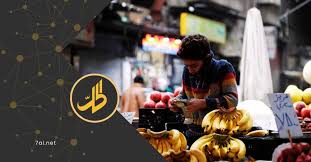Syrian markets continue to experience a prolonged state of stagnation, even as prices for many goods have declined and a wide range of products—both local and imported—remain readily available. The main culprit: a severe liquidity crunch.
Many Syrians are struggling with reduced purchasing power and limited access to cash, worsened by ongoing complications in withdrawing money from banks. This has led to a significant slowdown in consumer activity, leaving shops and markets across the country nearly empty.
Preference for Imports Despite Similar Prices
According to a report by Syria 24, imported goods—especially Turkish products—are seeing strong demand, even though their prices are now close to those of locally produced alternatives. Khawla, a resident of Aleppo, told the outlet that recently introduced customs duties have helped level out prices between domestic and imported goods. However, consumers still tend to favour foreign products, often due to slightly lower prices or differences in packaging and appearance.
She added that while some local products offer high quality, their prices haven’t fallen in line with the recent drop in exchange rates or global costs. She attributed this discrepancy to the high cost of raw materials and a persistent shortage of fuel.
With hope for future price reductions, many consumers are delaying purchases. Khawla called for more realistic pricing, stronger market oversight, and enough flexibility for merchants to stay afloat while also easing the burden on consumers.
Empty Stores and Cautious Traders
Shops in many Syrian cities are now largely deserted, as both traders and consumers adopt a wait-and-see approach. Although the Syrian pound has recently appreciated against the dollar and customs reforms have been enacted, these changes have yet to translate into increased consumption or revived market activity.
Zakaria Ahmad, a food trader in Aleppo, confirmed that prices have dropped significantly following the pound’s appreciation and the resumption of goods flowing into the market. This led to a wider supply and some easing of prices.
Yet some goods have bucked the trend. Prices have risen for items like meat—now permitted for export—as well as soft drinks, which are seeing higher demand with the onset of summer.
Despite price drops and product availability, Ahmad noted that consumer activity remains “very weak” due to the cash crunch. Many public sector employees are no longer receiving salaries, and banking restrictions continue to make accessing funds difficult.
A Deepening Economic Recession
The Central Bank of Syria continues to fix the official exchange rate at 12,000 pounds per dollar for buying and 12,120 for selling. However, on the black market, the pound recently climbed to 10,985 for buying and 11,075 for selling, after stabilising for some time between 10,300 and 10,500.
Syria is still grappling with a deep economic recession following a 13-year conflict that ended with the fall of Bashar al-Assad’s regime on December 8, 2024.
Today, the average Syrian family requires around 15 million pounds per month—roughly $1,200—for basic living expenses, including food and drink. Meanwhile, average monthly salaries remain at a meagre $20–$30, leaving many Syrians unable to purchase even essential goods despite their availability.
This stark mismatch between income and cost of living underscores the severity of the ongoing economic crisis.
This article was translated and edited by The Syrian Observer. The Syrian Observer has not verified the content of this story. Responsibility for the information and views set out in this article lies entirely with the author.


